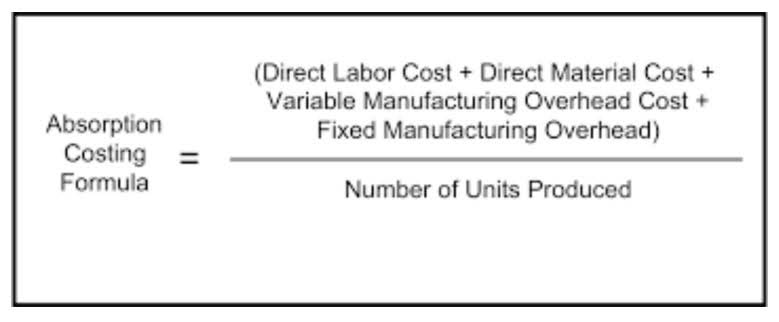Table des matières
- La perception du temps : comment la synchronisation modifie notre expérience quotidienne
- La perception de l’espace : comment la synchronisation transforme notre rapport au monde
- La synchronisation dans la mémoire collective et la construction du temps social
- Les effets psychologiques de la synchronisation sur notre perception du temps et de l’espace
- La synchronisation et ses limites : quand la perception du temps et de l’espace se distord
- La résonance entre synchronisation, perception du temps et d’espace : un pont vers la société de demain
La perception du temps : comment la synchronisation modifie notre expérience quotidienne
a. La temporalité dans les sociétés modernes : rythmes rapides et attentes de précision
Dans nos sociétés contemporaines, notamment en France, la perception du temps est fortement influencée par une accélération constante des rythmes de vie. La nécessité de respecter des horaires précis, que ce soit pour le travail, les transports ou les activités sociales, crée une temporalité où chaque seconde compte. Cette pression pour une synchronisation parfaite contribue à une sensation d’urgence permanente, modifiant notre rapport naturel au temps, qui autrefois s’écoulait plus lentement et plus librement.
b. La synchronisation et la perception individuelle du temps : entre accélération et ralentissement
Au niveau individuel, la synchronisation peut provoquer deux phénomènes opposés : d’un côté, une accélération de l’expérience du temps, où chaque moment semble compressé par la nécessité de suivre un rythme effréné ; d’un autre, un ralentissement subjectif lors de moments de déconnexion ou de méditation. La façon dont chacun perçoit cette synchronisation dépend de ses habitudes, de sa capacité à gérer le stress et de son rapport à la technologie. Par exemple, la pratique régulière de la marche ou de la pleine conscience peut atténuer cette sensation d’accélération et restaurer une perception plus organique du passage du temps.
c. Impact des technologies numériques sur notre rapport au temps : instantanéité et attente
Les avancées technologiques, notamment en France avec l’essor des smartphones et des réseaux sociaux, ont bouleversé notre rapport au temps. L’instantanéité de la communication oblige à une synchronisation quasi immédiate des échanges, renforçant la pression pour une réponse rapide. Cependant, cette quête d’immédiateté peut aussi engendrer une attente frustrante, lorsque la technologie ne répond pas à nos exigences. Ces dynamiques modifient notre perception, rendant le passé plus distant et le futur plus imprévisible, tout en renforçant la sensation que le temps est devenu un bien précieux à gérer avec soin.
La perception de l’espace : comment la synchronisation transforme notre rapport au monde
a. La cartographie mentale et la synchronisation des repères spatiaux
Notre perception de l’espace repose en grande partie sur une cartographie mentale construite au fil de nos expériences. La synchronisation des repères spatiaux, notamment par le biais de dispositifs GPS ou de systèmes de navigation, permet d’ajuster constamment cette cartographie. En France, la popularisation du GPS a transformé la façon dont nous nous orientons, rendant la navigation plus fluide et moins dépendante de la mémoire ou de l’intuition. Cette synchronisation des repères facilite une perception spatiale plus précise et immédiate, tout en modifiant la façon dont nous construisons notre rapport au territoire.
b. La coordination globale et la conscience collective de l’espace
Les systèmes de synchronisation à l’échelle mondiale, tels que l’horloge atomique ou les réseaux de communication, renforcent une conscience collective partagée de l’espace. Par exemple, lors de grands événements sportifs ou culturels en France, la synchronisation des horaires et des flux d’information permet une organisation fluide et une perception cohérente du territoire. Cette coordination globale contribue à une identité collective, où l’espace devient un espace partagé, perçu non seulement comme un lieu physique mais aussi comme un espace social et symbolique.
c. La réalité augmentée et la perception spatiale enrichie par la synchronisation
Les innovations telles que la réalité augmentée (RA) offrent une nouvelle dimension à notre perception spatiale. En intégrant des données synchronisées en temps réel, la RA permet de superposer des informations numériques à notre environnement physique, enrichissant ainsi notre compréhension de l’espace. En France, ces technologies commencent à être utilisées pour le tourisme, la pédagogie ou la navigation urbaine, transformant la perception traditionnelle de l’espace en une expérience immersive et interactive. La synchronisation de ces données en temps réel forge une perception spatiale qui dépasse la simple vision, devenant une expérience sensorielle enrichie.
La synchronisation dans la mémoire collective et la construction du temps social
a. Les calendriers, fêtes et rythmes sociaux : une synchronisation culturelle partagée
En France, la structuration du temps social repose largement sur des calendriers, fêtes et rituels partagés, tels que Noël, la Fête nationale ou la Toussaint. Ces événements, synchronisés à l’échelle nationale, créent une mémoire collective unifiée et renforcent le sentiment d’appartenance. La répétition régulière de ces rythmes sociaux forge un cadre temporel commun, permettant à chaque individu d’inscrire sa vie dans une histoire collective. La synchronisation culturelle devient ainsi un vecteur de cohésion sociale et d’identité nationale.
b. La mémoire collective et la synchronisation des événements historiques
Les grandes victoires, crises ou révolutions en France sont souvent commémorées à des dates précises, témoins d’une synchronisation historique. Ces moments, partagés à travers la mémoire collective, façonnent la perception du passé, du présent et du futur. La synchronisation des commémorations permet de maintenir vivante une conscience historique commune, renforçant le sentiment que l’histoire nationale est une continuité collective. Elle contribue également à la construction d’un récit partagé, essentiel à la cohésion sociale.
c. La perception du passé, du présent et du futur dans les sociétés synchronisées
Dans une société fortement synchronisée, la perception du temps se déplace d’un cycle linéaire vers une expérience plus fluide, où passé, présent et futur interagissent en permanence. La mémoire collective agit comme un fil conducteur, permettant une vision du temps comme un espace partagé, dans lequel chaque individu s’insère. En France, cette perception est renforcée par la transmission des valeurs et des récits historiques, qui façonnent l’identité collective et orientent la construction du futur.
Les effets psychologiques de la synchronisation sur notre perception du temps et de l’espace
a. La sensation de contrôle ou d’impuissance face à la synchronisation
Lorsque la synchronisation fonctionne harmonieusement, elle procure un sentiment de maîtrise sur notre environnement, renforçant la confiance en nos capacités à organiser notre vie. Cependant, lorsqu’elle devient oppressante ou inadaptée, elle peut engendrer un sentiment d’impuissance, de perte de contrôle sur notre perception du temps et de l’espace. En France, cette tension se manifeste notamment dans le contexte professionnel, où la surcharge d’informations et la pression pour suivre le rythme entraînent fatigue et stress.
b. La dissonance cognitive entre perception individuelle et réalité synchronisée
La dissonance apparaît lorsque notre perception subjective du temps ou de l’espace ne concorde pas avec la réalité imposée par la synchronisation. Par exemple, lors de décalages horaires ou de retards, cette incohérence peut provoquer un malaise, voire une confusion mentale. En France, où l’on privilégie souvent la ponctualité, ces écarts peuvent accentuer le sentiment de déconnexion ou de désorientation, soulignant la nécessité d’adapter notre perception à la réalité synchronisée.
c. La synchronisation et le sentiment d’appartenance ou d’aliénation
Une synchronisation réussie peut renforcer le sentiment d’appartenance à une communauté ou à une identité commune. En France, la participation à des fêtes nationales ou à des événements publics crée un lien collectif fort. Toutefois, une synchronisation trop rigide ou imposée peut aussi conduire à un sentiment d’aliénation, où l’individu se sent déconnecté de sa propre perception du temps et de l’espace. La clé réside dans la recherche d’un équilibre permettant à chacun de percevoir la synchronisation comme un outil d’harmonisation plutôt que comme une contrainte.
La synchronisation et ses limites : quand la perception du temps et de l’espace se distord
a. Les dérives de la synchronisation : stress, burnout et désorientation
Une synchronisation excessive ou mal adaptée peut entraîner des effets négatifs. Le stress chronique, le burnout ou la désorientation spatio-temporelle sont autant de conséquences possibles. En France, la pression pour respecter des délais stricts, combinée à une surcharge informationnelle, accentue ces risques. La difficulté à déconnecter devient un enjeu majeur, soulignant la nécessité d’instaurer des rythmes plus humains et respectueux du rythme biologique.
b. La désynchronisation : phénomènes d’isolement et d’anomie sociale
Quand la synchronisation fait défaut, l’individu peut ressentir un isolement accru ou une perte de repères, favorisant l’émergence de phénomènes d’anomie sociale. Ce phénomène se manifeste notamment dans des contextes de crise ou de transition rapide, où la rupture avec les rythmes traditionnels déstabilise la cohésion collective. En France, la désynchronisation peut apparaître dans les zones rurales ou lors de mouvements migratoires, illustrant l’importance d’une adaptation équilibrée des rythmes sociaux et technologiques.
c. La recherche d’un équilibre entre synchronisation et perception individuelle
L’enjeu actuel est de trouver un juste milieu où la synchronisation serve à optimiser nos expériences sans annihiler la perception subjective du temps et de l’espace. Cela implique de développer des outils technologiques et sociaux qui respectent la diversité des rythmes individuels, tout en maintenant une cohésion collective. La France, avec ses politiques favorisant le bien-être au travail et l’innovation responsable, s’efforce de concilier rapidité et humanisme, afin que la perception du temps et de l’espace reste vivante et authentique.
La résonance entre synchronisation, perception du temps et de l’espace : un pont vers la société de demain
a. Vers une perception plus flexible et subjective du temps et de l’espace
Les innovations futures, notamment dans le domaine des technologies immersives et des réseaux intelligents, ouvriront la voie à une perception du temps et de l’espace plus fluide et personnalisée. La possibilité d’adapter la synchronisation à nos besoins individuels, sans perdre la cohésion sociale, permettra de renouer avec une expérience plus authentique et sensible du monde. La France, en tant que terre d’innovation, participe activement à cette réflexion sur une synchronisation qui respecterait la diversité de nos perceptions.
b. L’impact des innovations technologiques sur notre perception future
Les avancées en intelligence artificielle, réalité augmentée ou cybersécurité offriront de nouvelles possibilités





